GIGABYTE Super4 A75-UD4H Socket FM1 Motherboard Review
S.T.A.L.K.E.R.: Call of Pripyat DirectX 11 Benchmark

The events of S.T.A.L.K.E.R.: Call of Pripyat unfold shortly after the end of S.T.A.L.K.E.R.: Shadow of Chernobyl following the ending in which Strelok destroys the C-Consciousness. Having discovered the open path to the Zone’s center, the government decides to stage a large-scale operation to take control of the Chernobyl nuclear plant.
S.T.A.L.K.E.R.: Call of Pripyat utilizes the XRAY 1.6 Engine, allowing advanced modern graphical features through the use of DirectX 11 to be fully integrated; one outstanding feature being the inclusion of real-time GPU tessellation. Regions and maps feature photo realistic scenes of the region it is made to represent. There is also extensive support for older versions of DirectX, meaning that Call of Pripyat is also compatible with older DirectX 8, 9, 10 and 10.1 graphics cards.
The game S.T.A.L.K.E.R.: CoP has no internal benchmarking tools built into the game engine, but they do have a standalone benchmark available that we used for our testing purposes. The screen capture above shows the main window of the benchmark with our settings. Notice we are running Enhanced Full Dynamic Lighting “DX11” as our renderer.
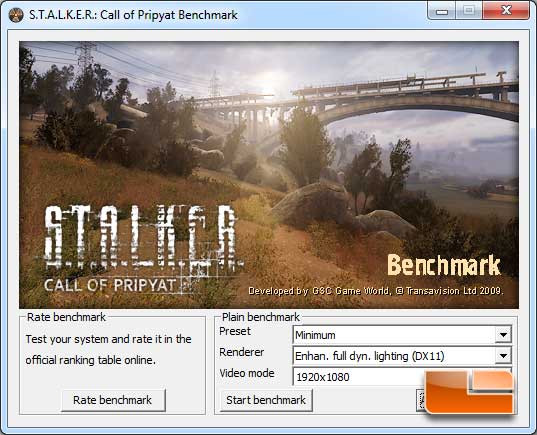
Testing the APU graphics we set the graphics to the minimum preset while using DirectX 11.
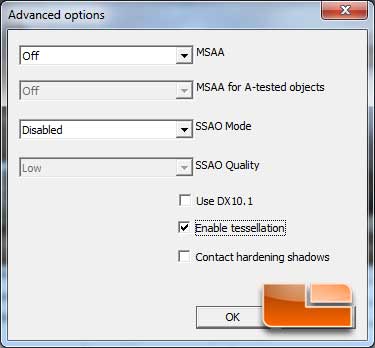
We also left off the MSAA, though we did leave tessellation enabled.
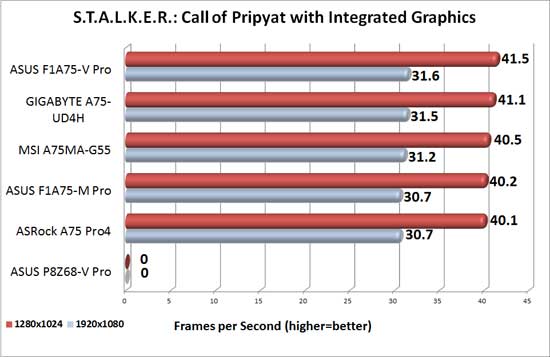
Benchmark Results: The GIGABYTE A75-UD4H was once again on par with our other AMD A75 systems. At the lower resolution of 1280×1024 it was able to average 41.1 frames per second which is only .4 frames per second lower than the top spot. Increasing the resolution to 1920×1080 the GIGABYTE A75-UD4H was able to average 31.5 frames per second which was only .1 frames per second behind the ASUS F1A75-V Pro.
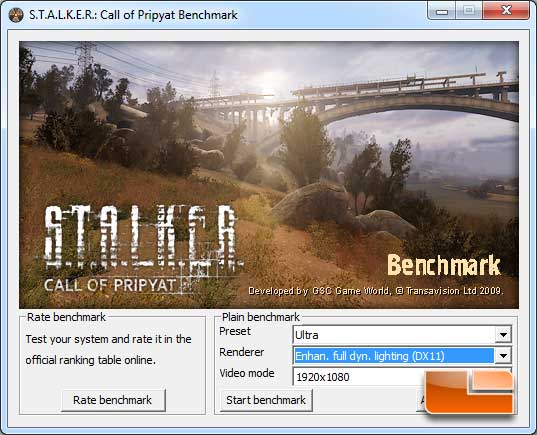
In order to give our XFX Radeon HD 6950 a workout on our systems we cranked the image quality preset to Ultra.
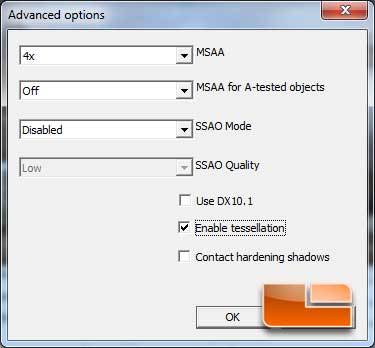
We also increased the Multisample Anti-Aliasing to 4x and left Tessellation enabled.
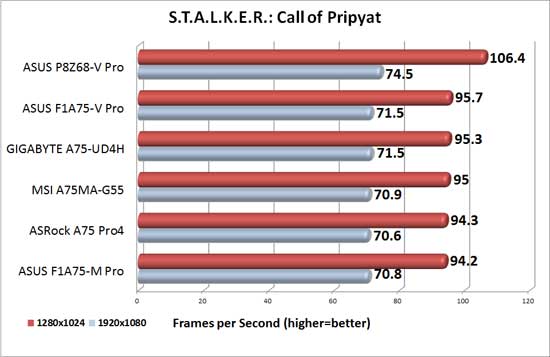
Benchmark Results: Installing the XFX Radeon HD 6950 into the GIGABYTE A75-UD4H we were able to increase the image quality settings to the maximum. Running the S.T.A.L.K.E.R.: Call of Pripyat benchmark at 1280×1024 the GIGABYTE A75-UD4H was able to average 95.3 frames per second, only .4 frames per second behind the ASUS F1A75-V Pro. Once the resolution was increased to1920x1080 the GIGABYTE A75-UD4H was able to keep the same average frame rate as the ASUS F1A75-V Pro with an average of 71.5 frames per second.

Comments are closed.